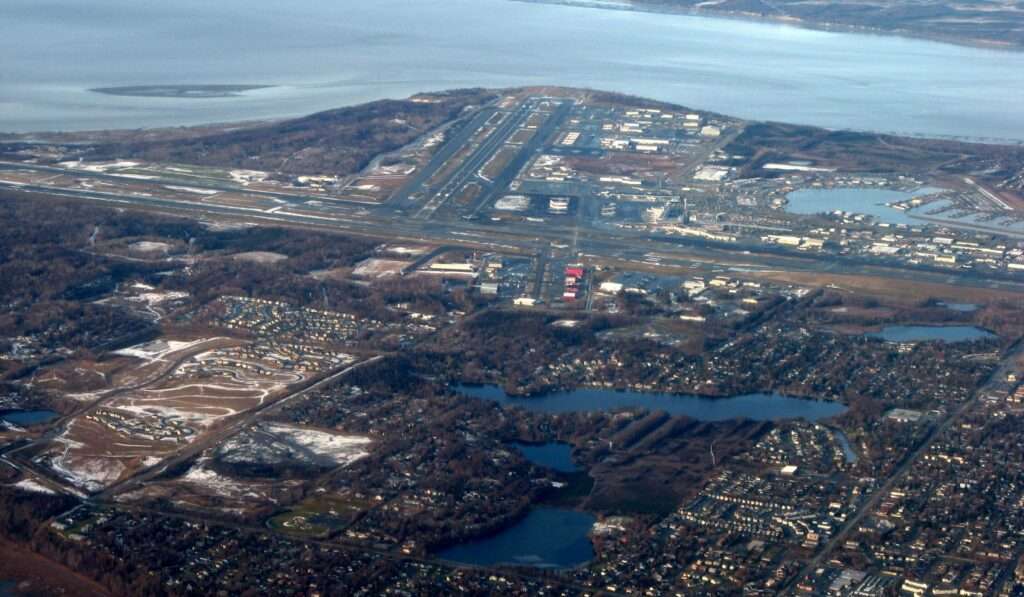Nestled amidst the Alaskan wilderness, Ted Stevens Anchorage International Airport (ANC) boasts a rich history intertwined with the growth of Anchorage and Alaska itself.
Originally a cluster of landing strips, the airport has evolved into a major cargo hub and passenger gateway, strategically positioned to connect North America and Asia.
This article explores the fascinating journey of ANC, from its humble beginnings to its current status as a vital international transportation center.
Early Days: The Rise of Aviation in Alaska (1920s-1950s)
The story of ANC begins in the early 1920s, when aviation first captured the imagination of Alaskans.
Wilbur and Orville Wright’s revolutionary invention offered a solution to the vast distances and challenging terrain that plagued traditional transportation methods.
In 1920, the first airplane landed on Alaskan soil near Anchorage, marking a pivotal moment.
Over the next few decades, aviation in Alaska flourished.
Entrepreneurs established rudimentary landing strips around Anchorage to cater to the growing demand for air travel.
One such strip, Merrill Field, emerged as a focal point for commercial flights.
However, these early landing strips lacked the infrastructure to handle larger aircraft or inclement weather.
Recognizing the need for a more sophisticated facility, the City of Anchorage and the federal government collaborated to construct a proper airport.
Construction on what would become ANC began in 1940, fueled by the strategic importance of Alaska during World War II.
The initial focus was on building runways capable of accommodating military aircraft.
The Jet Age and the Rise of ANC (1950s-1970s)
Following the war, the aviation industry experienced a phenomenal transformation with the advent of jet airliners.
These new airplanes boasted greater speed and range, revolutionizing passenger travel.
However, they also required longer and sturdier runways.

The newly christened Anchorage International Airport, officially dedicated in 1951, underwent significant expansion during this period.
The construction of a longer runway, coupled with improved terminal facilities, allowed ANC to handle the larger jet aircraft.
This transformation coincided with the economic boom in Alaska, fueled by the discovery of oil.
The strategic location of ANC, nearly equidistant from major North American and Asian cities, became a significant advantage.
Airlines began using ANC as a refueling stop for long-haul flights between Asia and the contiguous United States.
This strategic role as a “cargo crossroads” laid the foundation for ANC’s future prominence in the global cargo market.
A Gateway to Alaska: Tourism Takes Flight (1970s-1990s)
The 1970s and 1980s witnessed a surge in tourism to Alaska.
The state’s breathtaking natural beauty, abundant wildlife, and unique culture attracted visitors from all over the world.

ANC played a pivotal role in facilitating this tourism boom. Airlines expanded their routes to ANC, making it easier for tourists to reach Alaska.
The airport authority also recognized the growing importance of tourism and invested in improving passenger amenities.
New terminals were constructed, offering a wider selection of shops, restaurants, and passenger services.
Furthermore, the Alaska State Council on the Arts partnered with the airport to showcase Alaska Native art through a unique “Art in Public Places” program.
This initiative not only beautified the airport but also provided a glimpse into the rich cultural heritage of Alaska for arriving passengers.
The Ted Stevens Era and Beyond (1990s-Present)
In 1995, the airport was officially renamed Ted Stevens Anchorage International Airport in honor of the late Senator Ted Stevens, a prominent Alaskan politician who championed the development of the state’s transportation infrastructure.
The late 20th and early 21st centuries saw continued growth and modernization at ANC.
New cargo facilities were built to handle the ever-increasing volume of freight traffic.

The airport also implemented technological advancements to improve security, efficiency, and passenger experience.
Today, Ted Stevens Anchorage International Airport stands as a testament to Alaska’s remarkable transformation.
It is not only a critical gateway for tourism but also a major player in the global cargo industry.
With its strategic location, modern infrastructure, and commitment to passenger experience, ANC is poised to remain a vital transportation hub for decades to come.

Click the banner to subscribe to our weekly newsleter.

Click the photo to join our WhatsApp channel so then you can stay up to date with everything going on in the aviation industry!









